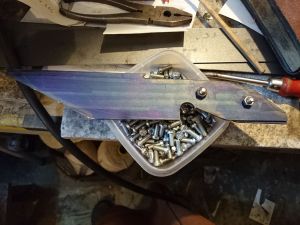A while back I recall a conversation in comments where rq mentioned that the trees dance when no-one is looking. Well, for this Tree Tuesday Lofty has found a tree that’s dancing when everyone is looking. Lofty says,
Another Eucalypt from my favourite bicycle riding area, it’s “doing the twist”!
That it is, Lofty. What a marvelous tree. Thanks for sharing.























